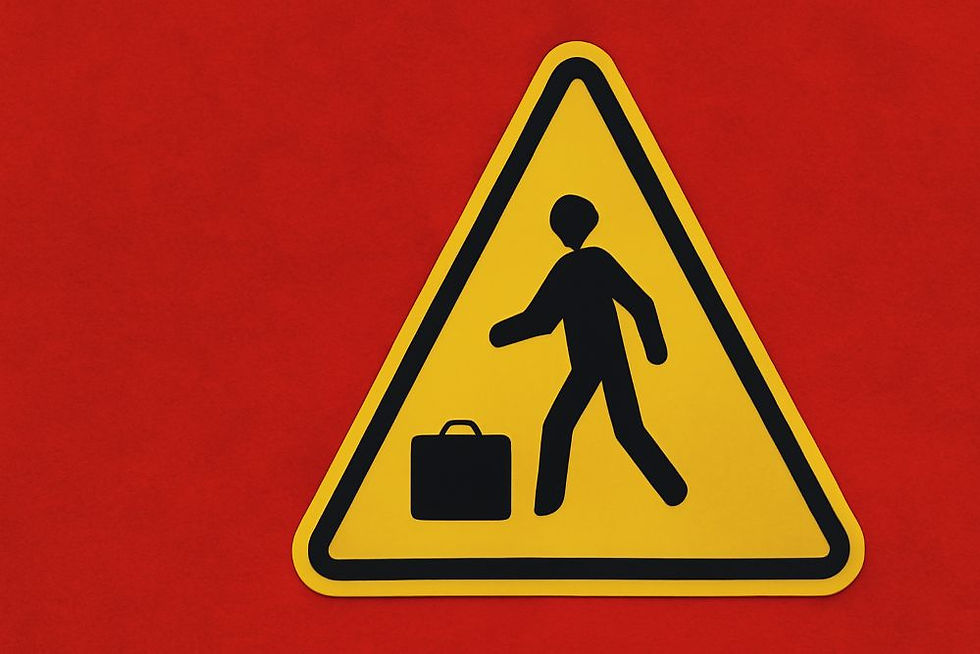All Hostages Freed: Hope Returns to Israel and Gaza
- Admin
- Oct 13
- 4 min read

In a highly emotional and historic moment that brought waves of relief and celebration across Israel and beyond, the last remaining hostages held by Hamas have finally been freed. On October 13, 2025, exactly two years after the devastating October 7, 2023, attack that threw the region into violence and political chaos, all 20 surviving Israeli captives crossed back into Israeli territory, ending a painful chapter.
According to multiple reports from Axios, NBC News, and CNN, the release marks a significant step toward regional de-escalation under a new Gaza peace agreement carefully brokered by the Trump administration. The deal, reached after months of behind-the-scenes diplomacy, has been praised by both Israeli officials and international observers as a rare breakthrough in a region long plagued by mistrust and retaliation.
A Painful Ordeal Finally Ends
For the hostages and their families, the journey to freedom has been one of unimaginable endurance. They spent 738 days in captivity, more than two years of fear, uncertainty, and hope. Families organized marches, held vigils, and launched international campaigns to keep the plight of their loved ones in the global spotlight.
“This is a day of miracles,” one relative said tearfully at the border crossing, surrounded by cheering crowds and waving flags. “For two years, we didn’t know if we would ever see them again. Now, our prayers have been answered.”
Among those released were Gali and Ziv Berman, siblings whose story became a symbol of resilience during the crisis. They were kidnapped during the Hamas-led assault on southern Israel in 2023 and endured difficult conditions while in captivity. Medical officials have confirmed that several of the released hostages are receiving treatment for malnutrition and trauma-related issues, but all are expected to recover.
The Deal That Made It Possible
Under the terms of the peace deal, Hamas agreed to release all remaining living hostages in exchange for Israel freeing nearly 2,000 Palestinian prisoners, many of whom had been detained on security-related charges. The exchange took place in stages throughout the day, starting with a small group of seven captives early in the morning, followed by the remaining hostages later that afternoon.
The carefully coordinated operation took place under tight security. Both sides collaborated with Qatari and Egyptian mediators, while U.S. special envoy teams observed the transfer. According to NPR, the final confirmation arrived just before sunset when the Israeli Defense Forces confirmed that all 20 hostages had safely crossed into Israeli-controlled territory.
While Israel has not released the complete list of Palestinian prisoners freed under the deal, officials say the exchange was designed to prioritize individuals with no direct involvement in acts of violence. One Israeli diplomat described the move as a “painful but necessary step toward restoring human dignity and trust.”
A Diplomatic Turning Point
The release wouldn’t have happened without renewed diplomatic efforts from Washington. U.S. President Donald Trump, whose administration led the negotiations, arrived in Israel the same day to speak to the Knesset. His speech emphasized America’s commitment to “lasting peace built on strength, compassion, and compromise.”
“The world has witnessed enough suffering,” Trump said. “Today proves that dialogue, not destruction, can open doors that seemed forever closed.”
U.S. officials confirmed that the deal required extensive coordination among intelligence agencies and regional actors, including Egypt, Qatar, and Saudi Arabia. The agreement is also expected to pave the way for renewed talks on Gaza’s post-war governance and humanitarian recovery.
Joy, Reflection, and Unanswered Questions
As the freed hostages returned home, tens of thousands of Israelis flooded into public squares, waving flags and lighting candles in solidarity. In Tel Aviv, the central Hostage Square, once filled with protest tents, turned into a sea of celebration and prayer.
Yet even amid the joy, difficult questions remain. Hamas is still believed to hold the remains of 28 deceased hostages, and discussions over their repatriation are ongoing. Analysts warn that while the release signals progress, it does not resolve the deeper political and territorial divisions that continue to fuel mistrust between Israel and Palestinian factions.
Security experts have also expressed concerns about the long-term effects of releasing so many prisoners, some of whom might rejoin militant groups. Others, however, see the exchange as a moral duty, a rare act of compassion that could restore diplomatic momentum.
Healing and Hope for the Future
For now, Israel’s focus is on healing and reintegration. The freed hostages are receiving medical evaluations and psychological support, while government agencies are coordinating community-based reintegration programs.
“This is not just an Israeli story,” said an emotional volunteer at a Tel Aviv hospital. “It’s a human story — one about survival, hope, and the power of perseverance.”
International leaders, including the United Nations Secretary-General and the European Union’s foreign policy chief, have praised the development as a potential turning point for Middle East peace efforts.
While challenges remain, the release of all surviving hostages stands as a potent reminder that even after years of conflict, diplomacy can still prevail.
As one banner held aloft in Jerusalem read:
“Two years of darkness — and today, light returns.”









Comments